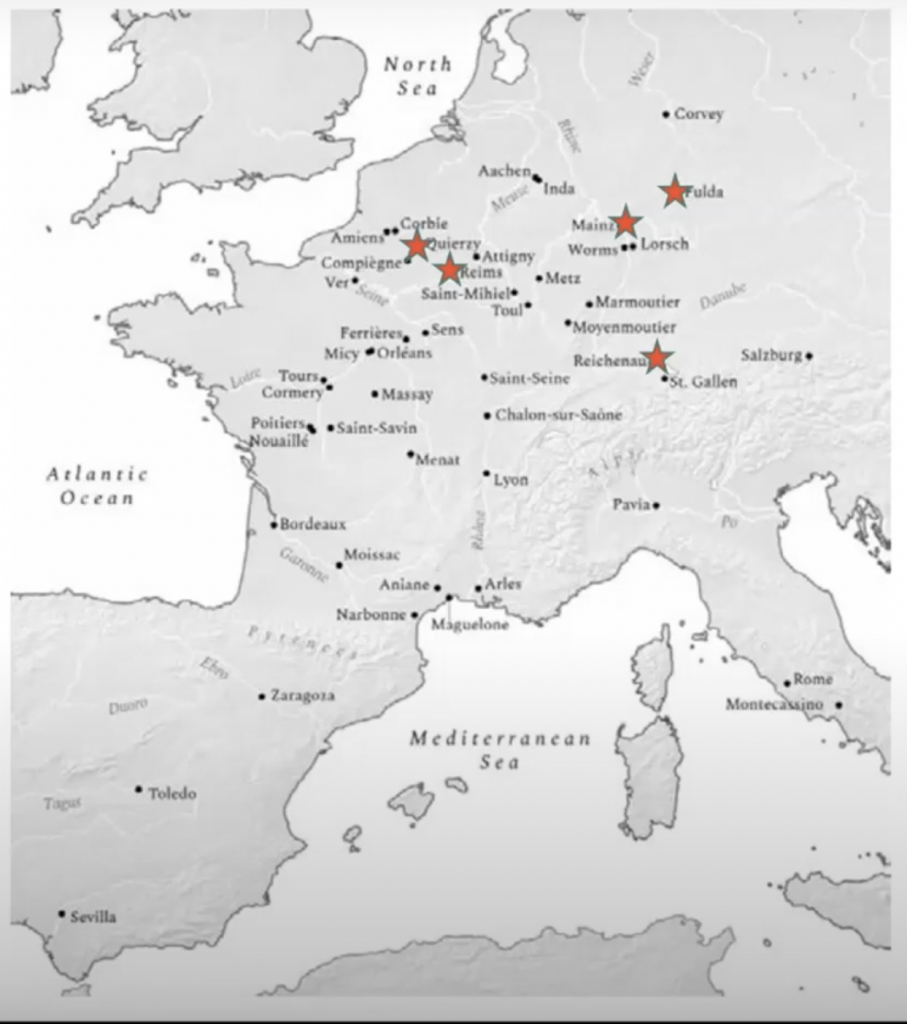With the never-ending news of schools banning books, one has to ask about the history and effectiveness of banned books. Fortunately, the Duke Forever Learning Institute hosted a seminar on the history of banned books in late September and provided examples that showed the ineffectiveness of banned books throughout time.
There was one particular story, however, that caught my eye, and that was the retelling of the history behind a banned book written by a man named Gottschalk. Clare Woods, an associate professor of Classical Studies at Duke, delineated the narrative of Gottschalk’s life from birth to prisoner.

Gottschalk was born to an aristocratic family around 803 AD and started his academic career when he moved into Fulda, a monastery, to become a monk. However, in 829 AD, Gottschalk left Fulda for reasons based either on the loss of his older brother or the enlightenment he received from the monastery he attended while studying abroad.
Upon leaving Fulda, Gottschalk studied at the monasteries of Corbie and then moved to northern Italy after he received his orientation as a priest. Gottschalk was unusual because monks tended not to move around that much, and monks also tended not to speak about their studies on heretical doctrine. Unfortunately for Gottschalk, he ignored the criticisms from other monks and instead grew confident in his studies to the point where he wrote a book about them.
While receiving hate for his ideas from multiple people, one man from Gottschalk’s past was truly adamant about having Gottschalk punished. This man was named Rabanus (Hrabanus), and he was accused by Gottschalk of coercing Gottschalk’s earlier career as a monk. From that, and with Gottschalk leaving the Fulda, Rabanus developed a personal vendetta against Gottschalk.

Gottschalk, the confident man he was, decided to defend himself at a Synod in Mainz, but it proved unsuccessful because he was condemned by the Synod and banned from the Kingdom of Louis. From there on, things did not improve for Gottschalk because, in the following year, he was brought to a second Synod that was attended by King Charles, who was the brother of King Louis the German. By the end of this Synod, Gottschalk was stripped of his priesthood, sentenced to silence, and imprisoned.
However, even with the punishments Gottschalk personally received and his books being burned, his books were still preserved and influential on others.
This influence seen with Gottschalk’s books after being banned was not an anomaly because that was seen with all banned books throughout history.
Another example was given by Lauren Ginsberg, an associate professor of classical studies, who presented Permussius Cordis, an author who lived under the Roman emperor Tiberius in the 1st century AD.
His story ended in tragedy since his books were included in a mass book burning and he was sentenced to death. However, his book still was able to influence the Roman population due to his daughter Marsha’s vigilance in keeping her father’s book alive.
While I only provided two examples, this pattern of books withstanding their ban is throughout time, and it is being repeated in the present. Across this country, book banning is back in style. In 2018, there were only 347 books that schools formally challenged, but in 2021 it became 1,500.

While this does put light on our current education system in this country, this is simply a gesture. It does make us think about what children will be learning in schools, but because the books are banned in schools does not mean the information within those books will not reach their target demographic. As seen in history, knowledge always finds a way of spreading, but of course, that is dependent on those who want to expand that knowledge.
At the end of this article, I hope you are reassured that seeing a banned book does not mean it is forever silenced. Instead, I hope that by reading this, you understand that you have all the power to ensure that the words within a book can withstand anything, including time.

Post by Jakaiyah Franklin, Class of 2025
Citation: Freedman, Samuel G. “A Display of Banned or Censored Books at a Bookstore Last October. Over a Recent 9 Month Period More than 1,500 Books Have Been Banned in Schools, Most Featuring Nonwhite Protagonists, Dealing with Racism, or Addressing the LGBTQ Experience.” Los Angeles Times, Los Angeles Times, 27 June 2022, https://www.latimes.com/opinion/story/2022-06-27/book-bans-critical-race-theory-wisconsin. Accessed 10 Oct. 2022.
